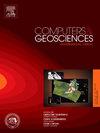Addressing class imbalance in micro-CT image segmentation: A modified U-Net model with pixel-level class weighting
IF 4.2
2区 地球科学
Q1 COMPUTER SCIENCE, INTERDISCIPLINARY APPLICATIONS
引用次数: 0
Abstract
Micro X-ray Computed Tomography (micro-CT) segmentation is a cornerstone in Digital Rock Physics (DRP), enabling detailed analysis of pore structures and mineral distributions. However, class imbalance remains a critical challenge, often resulting in biased segmentation outcomes. To address this, a methodology combining a modified U-Net architecture with a Pixel-Level Class Weighting (PCW) strategy is introduced. Unlike traditional class-level weighting, PCW assigns weights at the pixel level, offering finer control over segmentation by prioritizing minority classes and challenging pixels. This approach leverages modern deep learning frameworks, where input, label, and weight maps are jointly fed into the network, facilitating dynamic adjustments to emphasize task-specific regions. The modified U-Net incorporates dynamic dropout layers, L2 regularization, and optimized convolutional filters, enhancing computational efficiency and generalization. A dataset of only 40 micro-CT slices from two unique Bentheimer sandstone core samples is used for training and validation. When testing blindly on a third unique core sample, the modified U-Net with PCW increased the F1 score from 0.88 to 0.95. The model maintains the F1 score of majority classes 'pore' and 'quartz', while increasing the F1 score of minority classes 'clay' and 'feldspar' by 31% and 4.2%, respectively. Accurate segmentation of micro-CT images directly impacts downstream computational modeling in petroleum fields, improving permeability and porosity predictions essential for reservoir characterization and fluid flow simulations. The proposed framework represents an efficient, robust solution for imbalanced segmentation tasks, with potential applications in geosciences, such as mineral prospectivity mapping and geochemical anomaly detection.
求助全文
约1分钟内获得全文
求助全文
来源期刊

Computers & Geosciences
地学-地球科学综合
CiteScore
9.30
自引率
6.80%
发文量
164
审稿时长
3.4 months
期刊介绍:
Computers & Geosciences publishes high impact, original research at the interface between Computer Sciences and Geosciences. Publications should apply modern computer science paradigms, whether computational or informatics-based, to address problems in the geosciences.
 求助内容:
求助内容: 应助结果提醒方式:
应助结果提醒方式:


